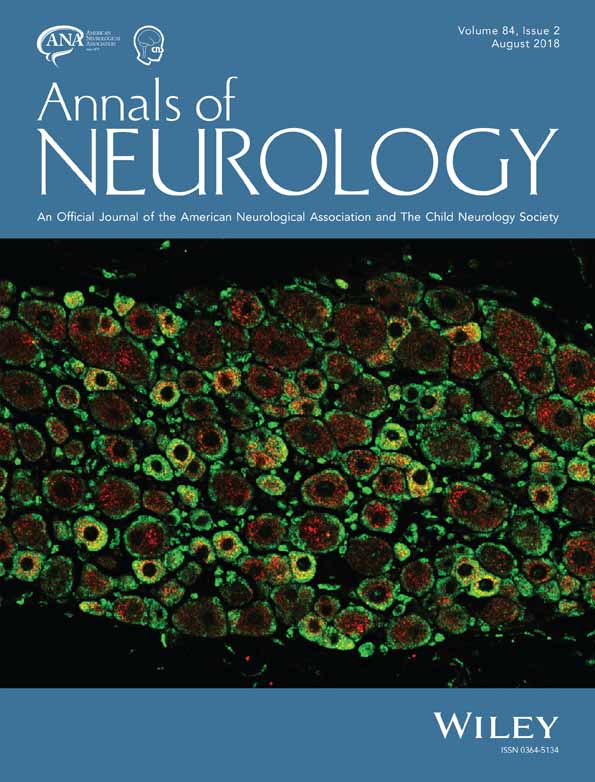Notch3ECD immunotherapy improves cerebrovascular responses in CADASIL mice
Abstract
Objective
CADASIL (cerebral autosomal dominant arteriopathy with subcortical infarcts and leukoencephalopathy), caused by dominant mutations in the NOTCH3 receptor, is the most aggressive small vessel disease of the brain. A key feature of its pathogenesis is accumulation of the extracellular domain of NOTCH3 receptor (Notch3ECD) in small vessels, with formation of characteristic extracellular deposits termed granular osmiophilic material (GOM). Here, we investigated the therapeutic potential of a mouse monoclonal antibody (5E1) that specifically recognizes Notch3ECD.
Methods
The binding affinity of 5E1 toward purified NOTCH3 was assessed using Octet analysis. The ability of 5E1 to bind Notch3ECD deposits in brain vessels and its effects on disease-related phenotypes were evaluated in the CADASIL mouse model, which overexpresses a mutant rat NOTCH3. Notch3ECD and GOM deposition, white matter lesions, and cerebral blood flow deficits were assessed at treatment initiation (10 weeks) and study completion (30 weeks) using quantitative immunohistochemistry, electron microscopy, and laser-Doppler flowmetry.
Results
5E1 antibody bound recombinant rat NOTCH3 with an average affinity of 317nM. A single peripheral injection of 5E1 robustly decorated Notch3ECD deposits in the brain vasculature. Chronic administration of 5E1 did not attenuate Notch3ECD or GOM deposition and was not associated with perivascular microglial activation. It also failed to halt the development of white matter lesions. Despite this, 5E1 treatment markedly protected against impaired cerebral blood flow responses to neural activity and topical application of vasodilators and normalized myogenic responses of cerebral arteries.
Interpretation
This study establishes immunotherapy targeting Notch3ECD as a new avenue for disease-modifying treatment in CADASIL that warrants further development. Ann Neurol 2018;84:246–259
Potential Conflicts of Interest
S.C., L.Ø.P., and J.T.P. are employees of H. Lundbeck A/S, which partially funded this study. Other authors (L.G., C.C., C.B.-M., J.R., V.D.-D., and A.J., from INSERM/University Paris 7) received neither consultant fees nor licensing payments from H. Lundbeck. INSERM/A.J. own patent rights to “Immunological treatment of cerebral autosomal dominant arteriopathy with subcortical infarcts and leukoencephalopathy,” which relates to the use of antibodies against Notch3ECD, including the 5E1 mAb, for treatment of CADASIL. The patent is not licensed to H. Lundbeck.




